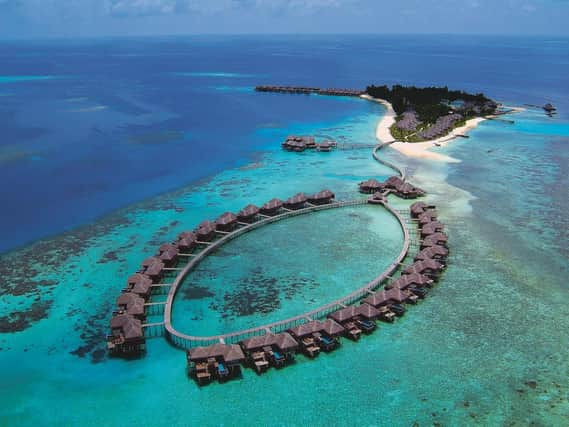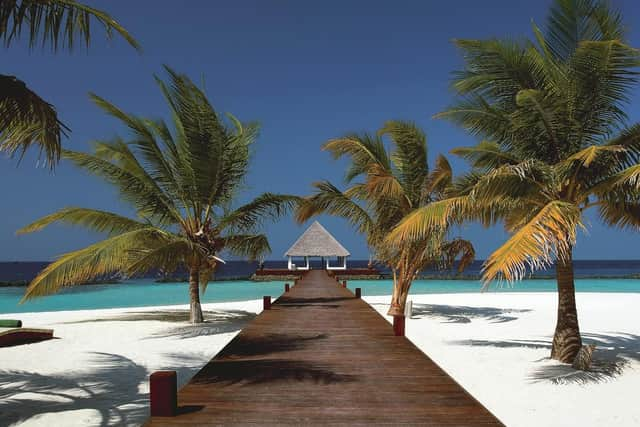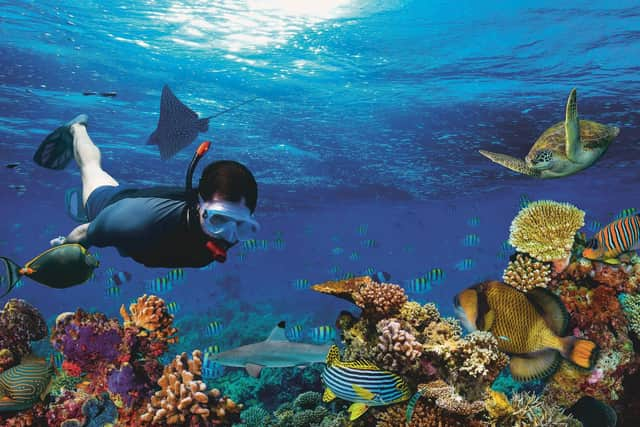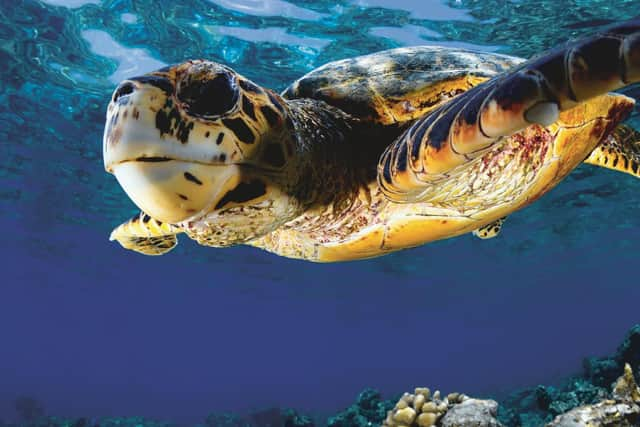Travel: Coco Bodu Hithi, North Male Atoll, Maldives, Scotland on Sunday travel


The realisation that your secluded luxury villa is directly beneath a domestic flight path wouldn’t generally be seen as the perfect start to a holiday.In this case, though, the gentle hum of tiny seaplanes – criss-crossing the skies with tourists destined for far-flung atolls of the Maldives – only enhanced the castaway quality of our own desert island retreat.
We’d arrived James Bond style by speedboat the previous evening, skimming the calm waters of the Indian Ocean between Male International Airport and the five-star resort of Coco Bodu Hithi. Lulled to sleep by the soporific swish of waves lapping against our private stretch of shoreline, we’d woken to a world of white, palm-fringed beaches, stilted ocean villas and clear turquoise waters. But for the vague hangover of 13 hours’ flying, already being soothed by the morning sun, this had to be the closest I’d come to a “died and gone to heaven” experience.
Advertisement
Hide AdAdvertisement
Hide AdOne of around 1,200 islands, including some 100 privately-owned island resorts, Coco Bodu Hithi is known for its intimate, laid back vibe and traditional Dhivehi charm, making it popular with couples and honeymooners, rather than boisterous families or thrill-seekers.Part of North Male Atoll, the entire island is smaller than ten football pitches (60, 511 sq metres) and easy to circumnavigate by kayak or paddle board, if you fancy an alternative perspective.


To make the most of its lagoon-like waters, the majority of the resort’s 100 villas are just offshore and connected to the island by a network of jetties.While the top-end Coco Residences epitomise the Maldives’ idyll of thatched over-water bungalows, we were happy to hide away in one of the resort’s Island Villas, nestled among lush palms with its own enclosed pool and private beach.When not out on the water, eating or being pampered in the spa, most guests appeared happy to while away the time in the luxury of their own accommodation. As a result, the island’s unspoilt communal beaches, with their abundant outcrops of fish-populated coral, were surprisingly quiet, even in October as we headed into high season.
To get more from our flipper-propelled forays, we took a short boat trip to nearby Turtle Point with the resort’s marine biologist, who runs guided tours for snorkellers and divers.Sadly, much of the reef has been grey for the past few years after sudden peaks in sea temperature caused widespread bleaching across the archipelago.The lack of colourful coral didn’t detract from the vast and dazzling array of marine life on view or the buzz of swimming among native nurse sharks, eagle rays and hawksbill turtles. It seems coral gardening projects to restore the reef around the resort are already showing encouraging signs, as are more general efforts to ensure tourism is sustainable in the long-term.
With such diversity on offer across the Maldives, and many resorts boasting their own USP – be it best surf, best nightlife, best for whale sharks – more and more visitors are choosing to island-hop. Others avoid the private resorts altogether and stay in guesthouses on the locally-inhabited islands for a more cultural (and cheaper) experience.While resorts like ours are allowed to exist in their own touristy bubble – disconnected from the local language, currency and customs – it’s a different story on inhabited islands, where alcohol is effectively banned and visitors are expected to respect conservative Muslim values when it comes to behaviour and beachwear.
Keen to keep pace with the newer resorts – now wooing the upmarket traveller with everything from tree-top restaurants to underwater bedrooms – Coco has introduced celebrity chef residencies to offer guests a unique foodie experience. A highlight for us was a tasting menu and masterclass with MasterChef judge Monica Galetti, chef proprietor of Mere in London, who helped us recreate her famous pistachio and raspberry millefeuille. As if the exquisite meal wasn’t enough, it was lovely to chat about her support for the All Blacks, her love of reef diving and the challenges of balancing TV and restaurant commitments with her all-important family life. (And, in the absence of the reproving Galetti glare, I suspect my precariously layered patisserie had secretly impressed).


For everyday wining and dining, Coco’s offering includes al fresco seafood and Mediterranean menus at its over-water restaurants, a Japanese sushi bar and a barefoot cocktail lounge serving an eclectic range of snacks. You get more bang for your buck (all prices are in US dollars) at the seafront buffet restaurant, where we found delicious Maldivian curries – similar to Sri Lankan cuisine – alongside an ever-changing repertoire of international dishes.
As you’d expect on a remote island, where most produce has to be imported, fresh seafood is hard to beat, while red meat and alcohol come at a premium. In the spirit of “in for a penny, in for an overdraft”, we signed up for cocktails with award-winning mixologist Ryan Chetiyawardana, aka Mr Lyan of Lyaness on London’s Southbank. Swapping his view over the Thames for something more tropical, he wowed us with a masterclass inspired by the exotic surroundings.
As I relaxed over my Jasmine Spritz, I was reminded by my younger travelling companions that this was one of the world’s most “Instagrammable” locations and we had to exploit it. It was time to get down with the influencers and perfect some glamorous Gram poses, they said. (More like glamorous gran poses in my case, we later agreed).With beach barbecues, sunset cruises, romantic sandbank escapes and dolphin watching to choose from, it’s the ideal place to generate some Insta envy. Others might prefer to see it as a haven from these day-to-day pressures. Stunning as they are, the posted images will never convey the sweet scent of tropical frangipani or that feeling of warm sand between the toes.
Advertisement
Hide AdAdvertisement
Hide AdPerhaps it was the absurd – if hilarious – sight of a fellow guest taking a business call while wearing a snorkel, mask and flippers that persuaded me to ditch the phone and enjoy the present.It’s not every day you have the chance to be lost – entirely in the moment – in paradise.


From coral reefs - many sadly now damaged – to hawksbill turtles, there is sealife aplenty, as well as the luxury of resort living
FACTFILE
Coco Bodu Hithi is currently only available as a package, including flights, if travelling from the UK. We booked through turquoiseholidays.co.uk, flying Edinburgh to Male, via Doha.The cost per person for seven nights, with breakfast, starts from £2,950 for an island villa or £4,810 in a Coco Residence.A boat trip with guided snorkelling tour costs $300 (approx £230) for two.Coco Bodu Hithi, North Male Atoll, Maldives. cococollection.com